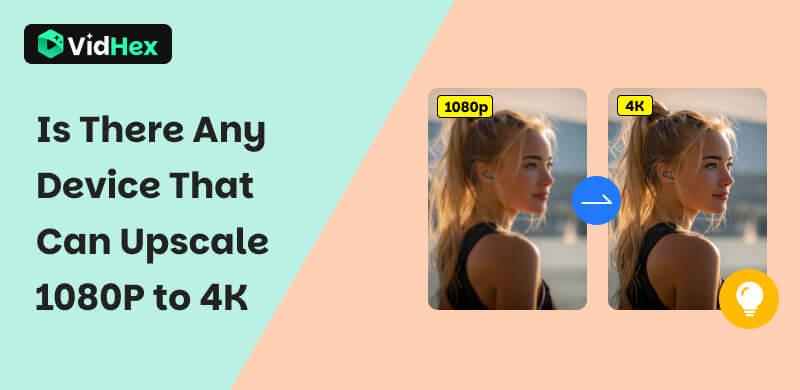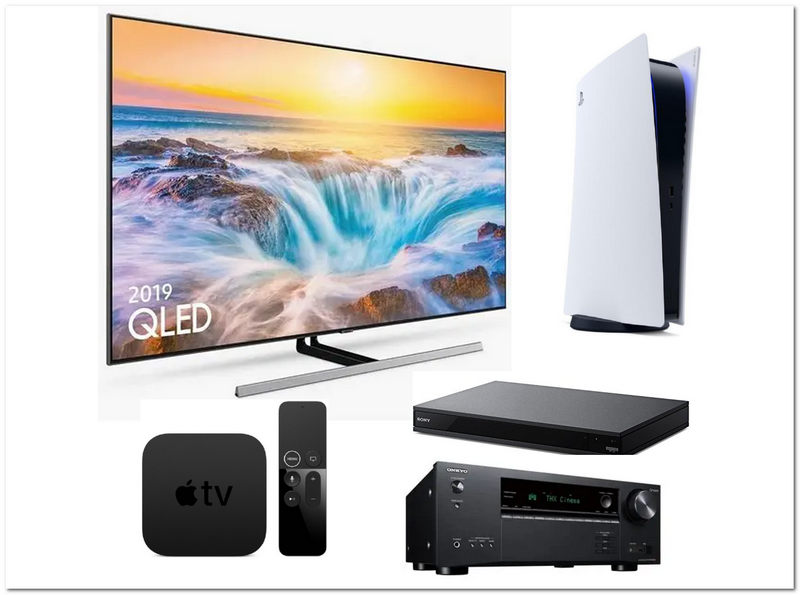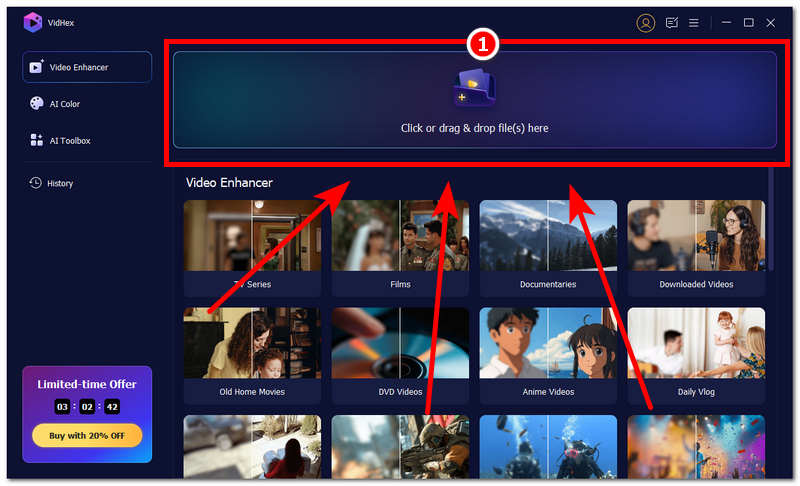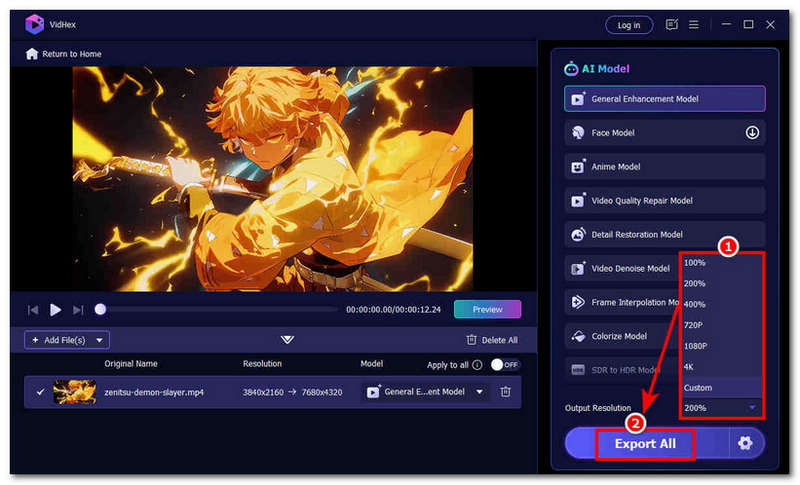Devices That Can Upscale 1080p to 4K: Video Upscaling
With the higher quality resolution of visual material, such as videos, becoming the standard for today's visual content, users are more likely to demand more. As videos become a part of our daily life, it is just normal to watch and have a higher resolution video. As years progress, so does the video resolution quality. Now, as more devices and platforms support 4K video resolution, some are still wondering if there is a device capable of upscaling 1080p to 4K videos automatically. But before that, it is essential to define what video upscaling is all about. This article provides a complete overview, giving you valuable information on it, as well as a list of devices that support the upscaling of 1080p videos to 4K.

Contents:
Part 1. What is Video Upscaling?
Video Upscaling is the process that occurs when a video with a lower resolution is upscaled to increase its resolution—essentially, making the video have a sharper look as well as more refined video details, allowing the video to be played or displayed on a larger screen. Upscaling is usually done on video that has 480p or lower, but in this case, it involves upscaling 1080p video resolution to 4K or higher.
How does video upscaling work? Generally, video upscaling is done with the help of a third-party tool or software that works alongside Artificial Intelligence (AI) technology. Through these tools, it will upscale video by automatically filling in missing pixels on the video frame by frame, analyzing it through its surrounding pixels.
Part 2. Devices That Perform 1080p to 4K Upscaling
Is There Any Device That Can Upscale 1080p to 4K? Yes, there is a device that can upscale video files to higher resolutions. Video Upscaling on devices refers to the process automatically done by our devices (TVs, mobile phones, gaming consoles, video players, and any device with a display screen for video footage).
How does a device automatically upscale a video? It uses a real-time upscaling processing method in which the device up-scales a video in real-time without converting it and permanently turning it into a higher resolution, such as 4K. Moreover, it analyzes frames of the video to interpolate missing pixel data, achieving a sharper and enhanced contrast, reducing video blur, and improving overall video clarity.

| Device Type & Example | Upscaling Capabilities | |
|---|---|---|
| Smart TV | Samsung 4K QLED Smart TV | Samsung TV uses AI technology to automatically analyze a video frame-by-frame to make the necessary color adjustments, clarity, sharpness, and details, and to give videos of 1080p resolution and lower to appear smooth and crisp on the screen. |
| Streaming Devices | Apple TV | A set-top box-type device with 4K Dolby Vision and Atmos support allows TVs with limited video resolution to show videos with 4K-like resolution. |
| Blu-Ray Player | Sony UBP-X700 | A standard and popular Blu-ray player capable of displaying Blu-ray and DVD videos, featuring a more vibrant and crisp video quality by relying on Sony’s proprietary video processing tech to sharpen and reduce video noise when a video is played on the player. |
| Gaming Consoles | PlayStation 5 | A home console that supports video up to 4K resolution is the best value for gaming. PlayStation’s upscaling of video capabilities relies on its compatibility with older games that have lower resolutions, allowing them to be played in higher quality, similar to how vibrant 4K resolution looks. |
| AV Receivers | Onkyo TX-NR6100 | An affordable and best value AV receiver capable of Dolby Atmos and 8K video pass-through. It uses its very own proprietary video processing chip to achieve interpolation of video missing pixels to fill in and upscale video while playing. |
Part 3. The Limitations of Hardware Upscaling
While there are a variety of device types and numerous examples that support real-time upscaling of video, users may utilize them to play their low-resolution video seamlessly. However, there are limitations on its uses, which we listed below.
• Device upscaling doesn’t have a permanent upscaling result; it just temporarily interpolates missing pixels in the video to improve the video's quality.
• Some of the hardware upscalers prioritize smoothness over sharpening video details, which affects how the video is displayed, resulting in softened edges that lose some of the video texture.
• Hardware upscaling on devices like AV receivers and players doesn’t have AI support, which makes their upscaling method of real-time playing videos more fixed and lacks intelligent analysis of each video frame to have a more customized upscaling process.
Part 4. The Superior Solution: AI Video Upscaling Software
If you are struggling to upscale your video using the abovementioned device upscaler for your low-resolution videos, consider using a third-party software tool with AI functionality to permanently upscale your video from 1080p to 4 K. Third-party software tool like VidHex Video Upscaler can do such thing as it is developed for upscaling of videos of any problem into 4K resolution easily. As a tool designed for such needs, VidHex easily enlarges videos with lower resolution to be played on devices with larger screens without compromising video quality. It automatically fills in missing video pixels through its AI to achieve 4K resolution quality.

Key Features
• AI-powered video upscaler software tool.
• Lightweight on the device with an easy installation process.
• It has various AI models for addressing different video upscaling needs.
• Gives a video with clearer footage, removing video grain.
• No watermark is seen when your video has successfully upscaled.
• Can batch process multiple videos to upscale in one go.
• Support video resolution quality export up to 4K resolution.
• Capable of addressing and fixing minor video corruption problems.
• Enhance video sharpness by removing blurry from video.
• It has natural-looking details and results.
• Capable of restoring facial details on videos.
• Refinement of video motion.
• Fast processing hardware for a smoother video upscaling process.
Steps in Using VidHex
Step 1. Download and have the VidHex Video Upscaler installed on your desktop device.
Step 2. Once you have installed the software on your desktop, you may open it. Once you have accessed its main interface, simply upload your video in the Click or Drag & Drop section located at the top of the tool.

Step 3. Once you manage to upload your video into the VidHex Video Upscaler software, to start upscaling your video of 1080p resolution into using a 4K video resolution quality or higher simply navigate your way on to the lower-right part of the interface of the software and situated abavoe the Export All button is the Output Resolution section menu, click on and from the drop-down menu select 4K as your video export resolution.
Step 4. Once you have chosen 4K video resolution as your video export quality, you may click on the Export All button to start processing your 1080p video and convert it to 4K.

Part 5. FAQs about A Device That Can Upscale 1080P to 4K
How does the device improve image and video quality?
The above-mentioned device type, capable of real-time video upscaling, achieves this by utilizing the embedded technology to process and apply adjustments to video textures, including noise reduction, missing pixel correction, and more, to achieve a similar 4K video resolution display.
Can it make 1080p look exactly like true 4K?
When using of a device or hardware to upscale a video into 4K you are not precisely getting a proper 4K resolution; instead, the device or hardware you are using will just improve the video details, reduce noise and blur, make it look sharper, and have a vibrant color to mimic what an actual 4K video resolution has.
Is it worth it to device upscaling 1080p to 4K?
Yes, while device upscaling will not be permanent, it turns your video into 4K. It is still worth it to upscale it and achieve a similar 4K video resolution effect while the video is playing on your device in real-time. By doing this, it becomes more watchable, and you can enjoy the video without struggling to identify the details due to its low resolution.
Conclusion
This article discussed what video upscaling is all about and what hardware upscaling is. While there are devices that upscale 1080p to 4K, it has their fair share of limitations, which we also discussed here. Moreover, this article has identified six device types that have real-time video upscaling capabilities, and possibly there are still more, but what we listed here achieve upscaling videos, whether by the device's proprietary processing hardware it uses or by intelligently integrating AI.
Still, the result of video upscaling your 1080p video to 4K through the use of the theabove-mentionedd devices varies on the actual quality of your video, sotoo have a more secure and assured high video quality export result, it is just better to use a third-party software tool for it, which will convert your video into 4K resolution instead of just realtime using a temporary 4K-like effect on it.




